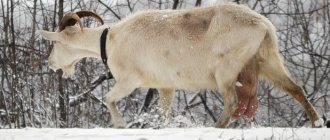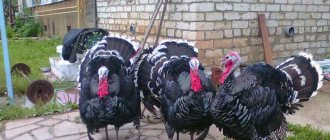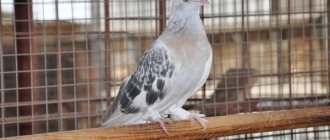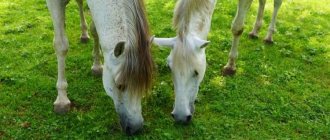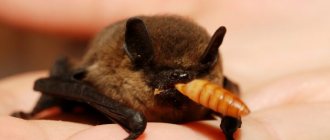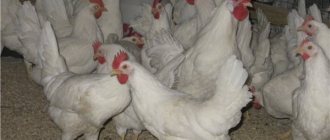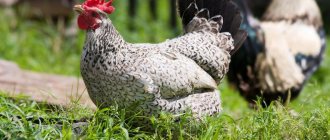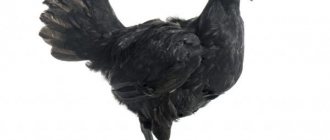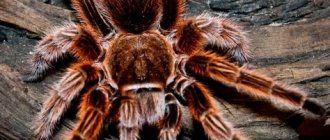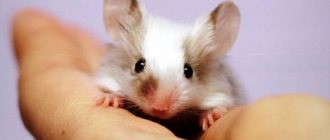Rules for keeping turkeys in winter
In many private farms today it is not at all uncommon to see turkeys that do not cause difficulties in keeping. Caring for them is similar to that for other poultry, such as chickens. However, if in the summer the birds are content with walking in the open air, keeping turkeys in the winter has some distinctive features.
Rules for keeping turkeys in winter
Required lighting
Every owner is interested in ensuring that the egg production of domestic turkeys does not drop in winter, and that the males continue to do their job. These indicators strongly depend on the housing conditions, and specifically on the correct lighting of the poultry house.
If your poultry house has windows, then, when keeping only young animals, you can do without additional lighting. If you keep adult birds, then lamps are necessary even if there are windows. It’s another matter when the walls of the poultry house are blank. In this case, when keeping young birds, the house is illuminated for about seven hours, and when keeping adult birds - up to 14 hours a day. If the lighting time is not observed, the egg production of turkeys will be significantly reduced.
Preparing the premises
Keeping turkeys at home in winter requires a spacious room. Considering the size of these birds, no more than two birds should be placed per square meter of space.
Poultry houses used for chickens, which have enough space and an attached area for poultry walking, are suitable for housing turkey stock.
Moreover, the room that will be intended for winter housing of turkeys will have to be heated. You can do this in several ways:
When using natural heating in a turkey rearing room during the winter season, check for existing cracks and holes that are caulking. The walls of the building must be insulated. At the same time, we must not forget that sometimes natural heating is not enough to ensure proper thermal conditions. In such cases, electrical appliances, gas boilers, and infrared equipment are additionally installed in the premises where poultry are kept.
A little bit of history
In many developed countries, turkey meat is one of the main decorations of the holiday table. It is used not only for preparing single dishes, but is also part of incredibly tasty smoked meats. For large feasts, a chicken carcass will not be enough, but a 20-kilogram overseas bird will be enough for everyone.
Turkeys already had more than 1,000 years of domestic experience behind them by the time they arrived on the European continent along with the ship of Christopher Columbus.
Turkeys were brought to Europe thanks to the efforts of Christopher Columbus.
Turkeys are considered large poultry: males easily gain 20 kg, and females - 10 kg or even more. Differences in weight are observed already after reaching 20 days: males are approximately 30% heavier than females. By the 4th month, the weight of the bird begins to increase rapidly: in females the weight indicator increases by 170 times, and in males by 200 times. If we transfer this phenomenon to a person, then at 4 months he would weigh 700 kg.
Creating a comfortable stay
Create comfortable conditions for the bird
Bedding
Of no small importance in the winter maintenance of birds is the bedding on which they spend most of their time. The warm litter is a thick layer of straw, peat or sawdust. To ensure the dryness of the bedding layer, it is changed:
Degree
Walk
The walking area for turkeys on the street must be cleared of snow, as birds have too sensitive limbs, so they often freeze them in the cold winter, which leads to colds.
Lighting requirements
To maintain the required illumination, the poultry house where turkeys are kept in winter must be provided with appropriate lighting devices, since the level of illumination significantly affects the productive indicators of egg production.
If you have properly organized natural lighting in the form of windows in the poultry house, you can limit yourself to such lighting without resorting to other lighting devices. There is enough natural light to raise young animals. For adult poultry, the duration of daylight hours will be at least 14 hours, therefore, even if there are window openings in the building, additional sources of artificial light cannot be avoided.
Bedding materials
The weak point of giant birds is their limbs. If a turkey gets hypothermia on its paws, this will lead to a number of diseases that can result in the death of the livestock. To prevent such a nuisance, thick and warm bedding should be laid in the room.
If the flooring is made of boards, and there is a solid foundation under the floor, then the bird can survive the winter without bedding. In all other cases, you cannot do without additional materials. Good bedding is made from the following components:
- dry straw;
- hay;
- wood shavings;
- peat.
Any of the selected types is laid in a layer having a thickness of at least three centimeters. In this case, the litter should be evenly distributed throughout the room. As for cleaning, hay or straw materials need to be changed at least once every 10 days, peat or sawdust - once a month. Thanks to frequent changes of litter, various diseases among poultry are prevented.
turkeys on a peat bed
Principles of winter feed ration
The lack of the green nutritional diet that turkeys are accustomed to during the summer seasons must be compensated for when keeping birds in winter, since during the winter turkeys require more energy during the winter, which is spent mainly on their own warming.
During the period of winter maintenance of turkey livestock, they switch to feeding poultry three times a day; for the winter, feeders are moved under the roof of the poultry house.
The distribution of feed ration when feeding turkeys in winter is as follows:
Among the mandatory food components when feeding turkeys in winter at home should be corn cobs, barley and wheat crops, which contain a lot of carbohydrate components and fiber that are useful for turkeys.
As a variety to the winter diet for feeding turkeys, which is more meager than in summer, the menu can include chopped carrots and beets, and steamed dry herbs. Coniferous branches, acorns and chestnuts can be used when feeding as a separate feed, or as an additive to mash.
Source
Are there winter breeds?
In fact, all types of turkeys are able to withstand short-term frosts. But there are breeds that are actively grown in the Urals and Siberia:
- Moscow Bronze.
- Black Tikhoretskaya.
- Kubanskaya.
- French turkeys.
- Canadian Broad Breasted.
- White Broad-chested.
- Hybrid Converter.
- Cross BIG-6.
Keeping turkeys in winter
Turkeys have recently attracted more and more attention from poultry farmers, because breeding these birds is beneficial for many reasons. Firstly, they gain weight quite quickly, and secondly, after slaughter, a turkey carcass will weigh much more than even the largest broiler chicken. In addition, turkey meat is considered dietary and is valued for its high taste. But, if there are no special problems with raising livestock in the warm season, then with the arrival of winter you should take care of the special conditions for keeping turkeys.
In this article, we will look at the main nuances that should be taken into account when raising livestock in the cold season, including the arrangement of a room for keeping birds, the diet for feeding turkeys in winter, and the main options for keeping livestock outdoors or in a greenhouse.
Keeping turkeys in winter
In the summer, turkeys spend most of the day outside, eating pasture, and come into the poultry house only at night. In winter, it is problematic to practice such maintenance due to thick snow cover and frost, so in the summer it is necessary to think about arranging a poultry house (Figure 1).
Note: A regular chicken coop is unlikely to be suitable for housing turkeys, especially if you keep a large flock. The fact is that turkeys are large birds, and they require a lot of space to gain weight and maintain productivity, so you will have to build a separate spacious poultry house for them.
To prevent birds from freezing, it is advisable to immediately erect a capital insulated building. When calculating its size, keep in mind that there must be at least 1 square meter of free space per individual. It is also advisable to attach a spacious fenced run to the barn, where the birds can spend their free time on relatively warm days.
Alternative Containment Method
Some poultry farmers have adapted to keeping poultry in a polycarbonate greenhouse in winter. This method has both opponents and supporters. Opponents claim that the greenhouse quickly becomes damp, and the polycarbonate itself is very fragile in cold weather. But supporters disagree. The fact is that this room is warm enough, daylight is naturally provided, and, most importantly, there is a lot of space.
The bottom of the greenhouse can be covered with slate sheets or plywood to prevent turkeys from breaking the polycarbonate with their beaks.
Perches and feeders should be mobile so that they can be easily installed and also easily dismantled. The floor, as in a stationary poultry house, must be covered with thick litter. And in the spring, before using the greenhouse for its intended purpose, it is simply washed with water from a hose and dug up.
Some owners use idle greenhouses not for keeping, but for walking turkeys and other poultry. This is especially true in frosty or rainy weather.
Conditions for keeping turkeys in winter
Turkeys are considered unpretentious birds that tolerate low temperatures well. However, this does not mean that arranging a poultry house for them can be approached lightly. If turkeys are cold, they will use the nutrients from their feed not to gain weight, but to produce the energy needed to maintain their temperature. In addition, egg production in females may decrease or stop completely. Naturally, in such conditions, further raising of birds will be economically unprofitable (Figure 2).
If your goal is to make a profit from raising turkeys, think in advance about how you will heat the room for keeping them:
If these conditions are not met, the livestock may begin to get sick, and weakened individuals may even die.
Room
Since turkeys spend most of their time indoors in winter, it needs to be made as comfortable as possible for the livestock to stay. First of all, it should be spacious, since crowded housing can lead to a surge in diseases and a decrease in the quality of carcasses (Figure 3).
Note: If you have a spacious poultry house with a walk on your property, you can easily adapt it for keeping turkeys.
Despite the fact that almost all breeds of turkeys tolerate frost well, you should make the room as comfortable as possible:
The Importance of Ash Baths
The presence of skin or feather parasites causes a lot of trouble not only for turkeys, but also for owners, because pets will have to be treated, and if this is not done in a timely manner, you can get a very disastrous result.
Blood-sucking insects cause discomfort to the bird: turkeys may begin to peck at themselves in an attempt to get rid of the itch. In this case, the skin is injured, which can lead to pecking and attacks on a weakened individual. Cannibalism often ends in death.
To prevent the appearance of parasites, place a container filled with a mixture of ash and sand in the room. The bird will take a dry bath and preen its feathers, which helps maintain hygiene. All the owner needs is to ensure that the mixture does not run out.
ash bath for turkeys
What to feed turkeys in winter
In the summer, turkeys independently find food for themselves on the range, but in winter this is impossible, and the lack of natural green food will have to be compensated for by other food products.
Note: The winter diet should be higher in calories and nutrition, as birds spend more energy maintaining optimal body temperature. It should also be taken into account that the feeders should be located inside the house so that the food does not freeze or become covered with snow.
In the cold season, birds are fed three times a day, and in the morning and evening the birds are given nutritious grains or mixed feed, which take a long time to digest, and wet mash and succulent feed are perfect for daytime feeding (Figure 5).
To provide birds with the necessary amount of nutrients, their diet should include:
Acorns, chestnuts and pine branches can be used as a vitamin supplement for wet mash. They can also be given separately in crushed form.
Walking in the cold season
Since turkeys put on fat quickly, they need exercise in the winter to stay in shape. If there is no severe frost, you can let them out of the house for 2 hours, but into an area where there is no snow, or where the snow has been previously removed. Otherwise, the bird's feet will be too cold. In general, it is better to organize the pen on the south side of the poultry house, whatever one may say, and in winter this factor will be noticeable. If the day is relatively warm, the birds can spend it in the pen until it gets dark, but in this case they still have dry bedding for walking in the winter.
In addition, walks are important to ensure that the bird receives vitamin D from sunlight. If you live in a village where the winter days are too short, or you cannot provide walks for the birds while keeping them, you can compensate for this by adding fish oil to the diet - a couple of grams in a wet mash. This will maintain the health and egg production of your turkeys.
Keeping turkeys in a greenhouse in winter
Experienced poultry farmers know that one of the best options for winter keeping turkeys is a polycarbonate greenhouse. During the cold season, this building is usually empty, so if you do not want to waste time and effort on building a separate poultry house, you can easily convert an ordinary greenhouse for these purposes (Figure 6).
Note: This building is excellent for keeping turkeys because an optimal microclimate is maintained inside, and the transparent polycarbonate allows enough light to pass through.
To help turkeys winter comfortably in a greenhouse, take into account these tips:
Keeping turkeys in a greenhouse in winter has another positive side. Since the birds will be indoors most of the day, they will naturally fertilize the soil in the greenhouse, and in the spring you will not have to spend extra money on buying special fertilizers.
Naturally, when moving livestock into such a building for the winter, you will have to move perches, nests, feeders and drinkers into it, which will have to be positioned in the same way as in a regular poultry house. In addition, the requirements for free space remain relevant: in order for the birds to be comfortable, each adult bird must have at least one square meter of greenhouse area.
Poultry house construction and preparation for winter
To keep turkeys, a spacious poultry house is set up - it is insulated, a vestibule is provided to prevent the penetration of cold air, and it is provided with additional lighting.
The floor is covered with bedding. The underlying material is straw or dry peat (layer thickness in summer is 7-10 cm, in the cold season it increases to 20-30 cm). The litter is changed completely in the summer, but in winter only the top damp and contaminated layer is removed. Peat is changed at intervals of 3 weeks, straw - at least once every 7-10 days.
For 1 adult or 5 turkey poults there should be at least 1 sq.m. Be sure to provide a walking area. Ideally, it should be equal in area to the turkey poultry; the minimum size is calculated taking into account the number of individuals (0.5 sq.m for each adult turkey).
The walking area is fenced (the height of the fence is at least 2.2 m, the top of the pen is covered with netting). It is placed on the south side of the building so that during the cold season the northern winds do not interfere with walks. In winter, the area is regularly cleared of snow - otherwise the turkeys’ feet will freeze.
Keeping turkeys outside in winter
Exclusive outdoor housing for turkeys is not practiced in winter. If other birds, for example, chickens or quails, can simply be placed in separate insulated cages, then with turkeys this idea is doomed to failure from the very beginning. Due to the large size of the bird, it is not profitable to equip them with separate cages, and such a design will take up too much space.
Figure 7. Turkeys are not kept outdoors in winter
In addition, outdoor housing is not suitable for turkeys because these birds have limbs that are very sensitive to cold. During long walks in the cold, they can get frostbite or catch a cold, and the meat and egg productivity of the livestock will decrease (Figure 7).
Based on this feature, you should not only constantly keep turkeys outside in winter, but also carefully arrange a walk for them. First of all, the walking area needs to be fenced and covered on top with a strong metal mesh. Turkeys can fly quite well and can easily get out of the range. The enclosure itself should be completely cleared of snow, and, if you have the opportunity, place hay or twig food on it, which the birds can eat during their walk.
If you have just begun to master the art of raising turkeys at home, and do not know how to properly prepare the livestock and the premises for its maintenance for the winter, we recommend that you watch the video, which describes in detail how to properly raise these large birds in the cold season.
Source
Frostbite in turkeys
If you do not adhere to the rules of walking and maintenance requirements during the winter, turkeys will develop frostbite. Only 2 parts of the body are affected:
- paws;
- goatee
In rare cases - a scallop. The main reason lies not so much in the frost, but in the accompanying high humidity and windy weather. If the house is damp and the birds are taken out into the cold, frostbite cannot be avoided.
How it manifests itself:
- Beard. The color becomes pale, the structure is fragile, to the point that it can break off (when kept outdoors). Subsequently, the edges darken and even turn black.
- Paws. The first sign is lameness. Further hardening of the pads, blisters, deformation and gouty growths appear. Sometimes fingers fall off, resulting in gangrene.
For treatment, special ointments and oils with bactericidal and healing effects are used. The prescription of a specific drug is exclusively carried out by a veterinarian.
If you find primary signs of frostbite, immediately bring the bird into a warm place and provide it with comfortable conditions (high bedding, temperature not lower than +5-10°C). It is forbidden to bathe them or take them outside until they recover.
To what temperature can turkeys live outside?
Turkeys are heat-loving birds. They show good productivity only under comfortable conditions. They need fresh air, clean bedding or cage and a normal microclimate. In summer, the livestock is kept in an open enclosure and walked on pasture. With the onset of cold weather, the herd is taken indoors for the winter.
To avoid vitamin D deficiency, turkeys are walked daily. If it's frosty outside, the walks are short. After exercise, the birds must be taken to a warm room. What are the features of keeping birds in winter? What do they feed turkeys so that they don’t get sick and don’t reduce their productivity?
Temperature conditions in the poultry house
In the most severe frost conditions, it is allowed to reduce the air temperature in the poultry house to minus three degrees Celsius. If the temperature outside rises to minus fifteen degrees Celsius, then the climate temperature in the poultry house can be reduced to minus five. This is due to the fact that at very low temperatures humidity increases.
To level out this phenomenon, a gap of two degrees is provided. A positive temperature of one degree Celsius is considered comfortable living conditions for all breeds of turkeys, regardless of whether they are adapted to frost or not. At this temperature, turkeys’ bodies develop comfortably, gain weight, and the egg production corresponds to the declared breed.
Winter conditions
Poultry houses are built for turkeys, greenhouses and greenhouses are equipped. The main thing is that they are warm. If the winter in the region is not characterized by severe frosts, then it is enough to equip the turkey poultry with moisture-proofing material and insulation. In severe frosts, heaters are installed in the poultry house or a heating system is thought out:
The optimal temperature in a turkey house is 15 C. Some poultry farmers keep their livestock at sub-zero temperatures. This is explained by the fact that when heated, moisture can settle on the walls of the poultry house, which will lead to the development of rot and fungus. To prevent this from happening, it is recommended to consider ventilation and thermal insulation of the room. The optimal humidity for turkeys in winter is 55%.
If farmsteaders raise young animals for meat, and the poultry house contains turkeys and breeding turkeys, then the temperature should be maintained at 18 C. Daylight hours are 16-17 hours. In this case, laying turkey poults develop well and quickly gain body weight. Reproductive functions do not decrease in females or males. For chicks in a brooder, the microclimate should not depend on the change of season.
There are many videos on the Internet that show that birds are kept in an open enclosure in freezing conditions in winter. Experts note that this is unacceptable. The livestock may become hypothermic and immunity will sharply decrease. There is a risk of developing respiratory and infectious diseases. It is permissible to keep livestock outdoors in winter if the ambient temperature does not fall below +8 C. A pen with a canopy is built for the herd. In this case, good productivity should not be expected from turkeys.
Poultry house insulation
Features of preparation for winter of a room for keeping turkeys depend on the temperature inherent in the region. If winters are moderately cold (up to -15 °C), then it is sufficient to insulate the turkey poultry well, thereby preventing heat loss. To achieve this, the following activities are carried out:
- sealing all cracks (except for ventilation holes);
- insulation of walls with materials such as foam concrete, glass wool, polystyrene foam;
- minimizing the penetration of cold air into the house (a vestibule is provided; in extreme cold, the windows are covered with thick fabric or polyethylene);
- the room is provided with additional lighting (during lamp operation, the lamps emit additional heat)
If the thermometer drops below -15 °C, the room is heated - use (optional):
- infrared devices;
- electric heaters;
- gas boilers;
- potbelly stoves.
When installing any heating device, safety precautions must be taken to avoid fire and injury to birds when they come into contact with heated parts of the equipment.
What to feed birds in winter?
With the onset of cold weather, poultry farmers become more concerned with their birds. In winter, individuals require a lot of energy to maintain a certain body temperature and for normal development. How are turkeys kept and what are they fed in winter? The livestock is fed 3 times a day. The main share of the diet is occupied by protein mixtures.
Turkeys receive grain mash from corn, wheat and barley. If the farmsteaders have prepared silage for the herd, then it replaces the amount of green grass that the turkeys received in the summer. If there are no such preparations, then the diet is saturated with root crops and vegetables. Grass meal and hay must be added to the diet.
The volume of feed increases. If in summer adults received up to 400 g of feed daily, then in winter the portion increases by almost 100 g. Young animals receive 30% less. Experts suggest using the following diet in (g):
It is recommended to add fish oil to the feed, 10 ml per head. The supplement is especially useful if the livestock is kept indoors without being allowed to walk outdoors. This is a good prevention against rickets and bone diseases for poultry kept at home. Fish oil supports the immune system of birds.
Turkeys do not move as actively in the winter as they do in the pasture in the summer. With excessive amounts of protein supplements and mixtures, they may develop obesity. To prevent this from happening, it is necessary to monitor the feeding regime. In the morning, it is recommended to give the livestock grain mixtures, protein fillers, and mineral salts. Lunch consists of finely chopped vegetables. In the evening, they give vegetables and a grain mixture without cake, yeast and bran.
Little trick
Turkeys often suffer from parasites in their feathers from careless owners in winter. To avoid this misfortune, be sure to leave a container filled with ash and sand in the house. Poultry uses a sand-ash bath to prevent and control parasites.
Don't forget that turkeys, like chickens, constantly peck at small gravel and pebbles. Separately from the food, pour crushed shells, chalk and charcoal into the trough. This is necessary for digestion.
There is nothing particularly difficult about keeping turkeys in winter. If the owner is not lazy and prepares for low temperatures and short days, then his poultry house will overwinter in warmth and comfort, without losses.
Disease Prevention
To prevent overwintered birds from looking skinny and sickly, you should always monitor the health of the birds and their plumage. Poultry farmers often wonder what to feed turkeys in winter to keep them healthy and beautiful. If bald spots appear on the body of turkeys, then the cause of this phenomenon should be found out.
The time for molting has not yet come. The feather change will take place in March-April. Bald patches appear when feathers fall out due to a lack of mineral salts and vitamins. In this case, the traditional winter diet is adjusted:
| № | Helpful information |
| 1 | Instead of grain mixture, bran and protein additives, feed is given. Portion for 1 individual 300 g. The feed contains all the necessary nutrients and mineral salts. The mixtures must contain a premix: this is a vitamin supplement |
| 2 | hay and grass meal are given along with the feed |
| 3 | feed the livestock with vitamin cocktails, calcium gluconate, and potassium permanganate solution |
| 4 | start walking birds if weather conditions permit |
| 5 | intensive diet is maintained for 2 weeks. Next they look at the condition of the livestock. If the feathers stop falling out and the birds become active, they are gradually transferred to their usual diet. |
It is important to keep turkeys on dry and clean bedding. Before placing the livestock in the poultry house for the winter, the premises are cleaned, disinfected, and treated against blood-sucking insects and parasites. Anthelmintic drugs are added to the feed for birds. The litter must be changed and its condition monitored throughout the winter period. If necessary, it should be updated.
For infectious diseases, livestock are treated with antibiotics. Sulfonamides and tetracycline drugs are used. It is recommended to administer anti-infection drugs Baycox and Furazolidone to both young and adult birds. These products will prevent the development of coccidiosis, pullorosis, mycoplasmosis, and respiratory diseases.
Winter care of turkeys differs from summer care of birds. The herd spends more time indoors. Change the diet for adult livestock. The microclimate in the poultry house allows a slight decrease in temperature and an increase in humidity. The turkey house needs to be insulated or equipped with heating. For chicks in the brooder and for fattening young animals, the usual diet and microclimate are maintained. Laying hens and turkeys that are part of the family herd require the same. In winter, it is necessary to take preventive measures against the development of infections and vitamin deficiency.
YouTube responded with an error: API key expired. Please renew the API key.
The specificity of keeping turkeys lies in the need to create special conditions for them and the need for a large amount of feed. These nuances justify the lethal yield of meat products. What you need to know to obtain productive livestock, how to select and keep them at home, as well as the rules for caring for birds and the main requirements for arranging their abode, learn further from the article.
Useful tips
Experienced turkey breeders advise paying attention to a number of nuances when keeping them in winter. They are as follows:
- especially in winter, the poultry house should be clean, since paws wet in excrement are most quickly susceptible to frostbite;
- do not allow dampness in the room - change the bedding more often, arrange ventilation (preferably with warm air);
- if the temperature change is too sharp, do not take the birds outside for about 3-5 days, let them adapt to the frost in the house;
- if the female incubates eggs, arrange them as high as possible above the floor level - at least 50 cm;
- Don’t ignore walks, otherwise the birds will get fat.
It is extremely rare that problems and difficulties arise when raising turkeys in winter. The main thing is to listen to the recommendations of experienced farmers and veterinarians, to properly equip the poultry house, and not to exceed the walking time. Pay special attention to their diet - birds must have strong immunity and a lot of energy.
0
0
Copy link
Rules for choosing good individuals
To obtain a healthy turkey population, you initially need to select breeding individuals. The parental family should consist of one male and 3-4 females.
Signs of good productive qualities of the host turkey are its inflated body and downward wings. In this way he demonstrates his importance, which attracts the attention of turkeys.
For breeding purposes, non-aggressive females with clean, shiny plumage and a healthy appearance are preferred. Keep in mind that they are good hens, and the time for the appearance of young animals will come within 28 days after the start of hatching eggs.
It is important that the bird you choose matches the characteristics of the breed you are going to breed.
Maintenance and care at home
The productivity of the livestock depends on the arrangement of the poultry house, the temperature and air humidity in it, as well as on the food supply of the birds.
Did you know? Every year in the United States of America, housewives bake more than 270 million turkeys for Thanksgiving, that is, one for every resident of the country.
Content Features
Experienced poultry farmers know that poultry birds grow poorly in cold rooms, since the feed they consume is not used to build fat and muscle mass, but for additional heating.
Excessive heat is also contraindicated, since it is the main reason for the decrease in egg production, live weight of the bird and deterioration in the quality of its eggs.
To create comfortable conditions for the bird, take care of the optimal temperature, eliminate dampness, arrange cozy perches and proper lighting.
Optimal growing conditions
Turkeys grow well if kept at:
Did you know? Turkey meat has hypnotic properties. This is due to the tryptophan it contains, which, when interacting with amino acids, calms the central nervous system
.
Content requirements
The main mistake of novice poultry farmers is that they keep different birds in the same room. Remember: turkeys must live separately, so they require individual housing with designated compartments for females and males. They are released for walking at the same time.
Tips for Raising Turkeys
The following recommendations from experienced poultry farmers will help increase the productivity of livestock and its safety:
- Be serious about providing a nutritious diet for your birds. Feeders and drinkers must be clean and food must be fresh. Avoid spoilage and souring of wet mash. Carefully calculate the required portion of food for your detained family.
- Regularly disinfect the turkey house, treating not only the surfaces of the structure, but also all internal utensils and equipment. Clean the room from droppings in a timely manner, as well as replace contaminated bedding.
- Control the temperature in the turkey house, avoid drafts and dampness.
Don't forget about ventilation. Did you know? Initially, Europeans regarded turkeys as a source of unique feathers for hats and ball gowns, and only over time the meat of this bird was appreciated. - Do not allow healthy and infected birds to be kept in the same room. Start treatment when you detect the first signs of the disease.
- Don't skimp on vaccinations. In case of illness, treatment will cost many times more.
- Place the poultry house on a dry and level area, avoiding lowlands, as well as places where melt and rain water accumulate. It is desirable that the area chosen for construction be characterized by a slight slope to the south.
- Be sure to waterproof the floor covering. It is better to do this by pouring liquid bitumen, which stands out from all materials due to its affordability, heat-saving qualities and hygiene.
- It is advisable to carry out planned disinfection of the premises every six months; unscheduled procedures are relevant in cases of infectious diseases. After disinfection, be sure to close the poultry house for 3 hours to completely destroy pathogenic microflora. After this, ventilate thoroughly and warm up. Only then can livestock be allowed into the turkey poultry.
- Observe the activity of your students. This will detect signs of diseases in the early stages and also prevent their development.
- Strictly control the quantity and quality of food consumed by birds.
Breeding turkeys brings a lot of trouble, however, it justifies itself with high productivity. Success in this matter is guaranteed by fundamental compliance with the requirements for the arrangement of the turkey poultry, the composition of the daily diet for the livestock and its care. If you follow the rules of poultry farming and take timely preventive measures against infectious diseases, the result obtained will justify the resources spent.
